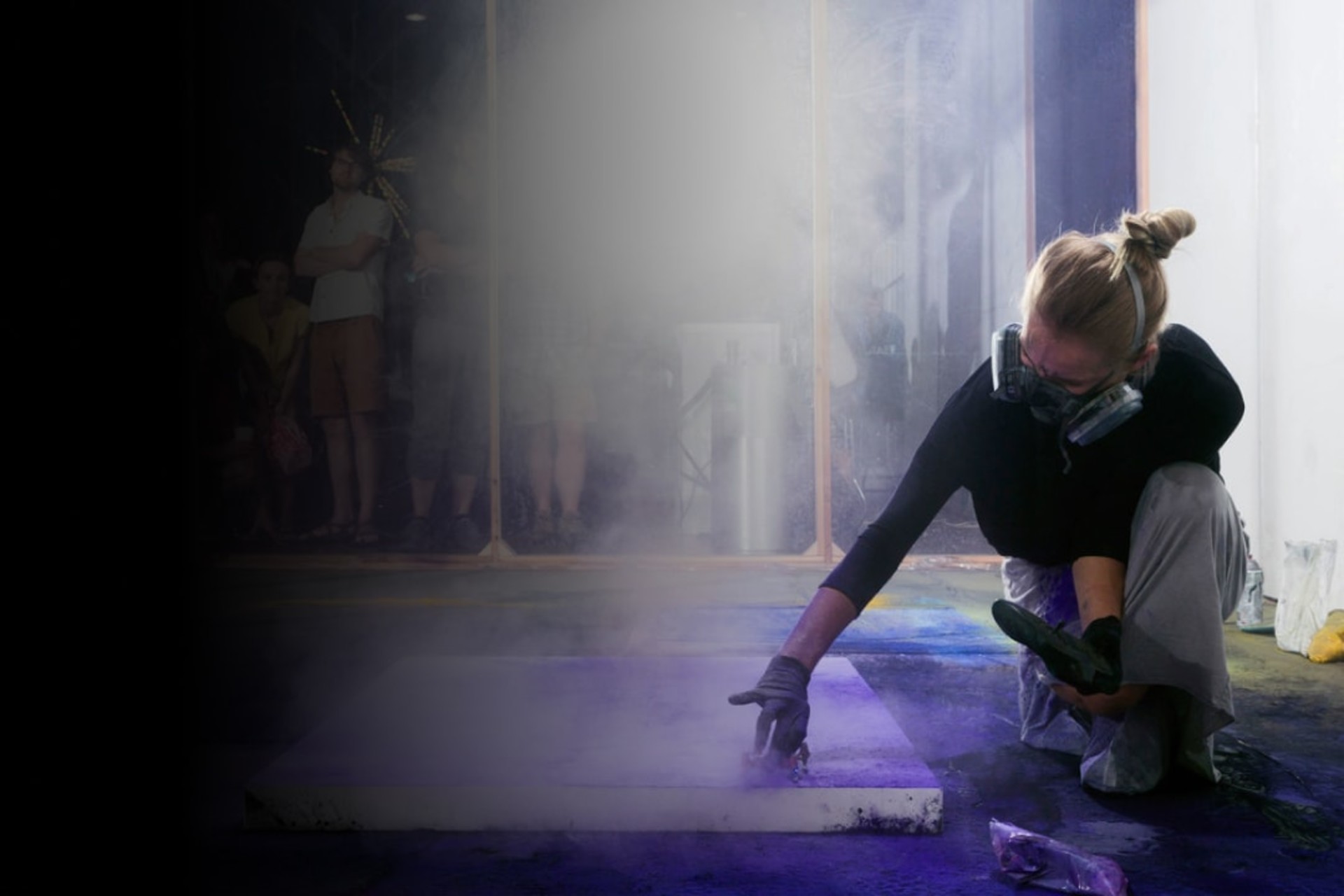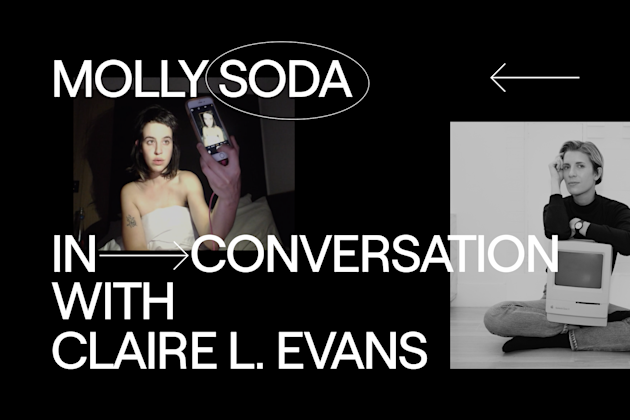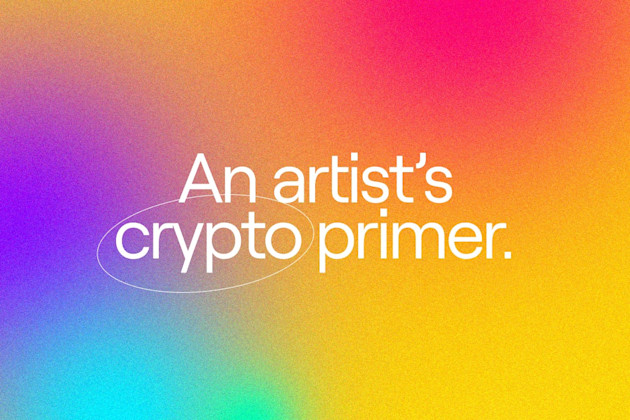Addie Wagenknecht on using crypto to hack the art world.

Addie Wagenknecht is a visionary artist, technologist, culture hacker, and open-source researcher. She has been widely featured in publications from the New York Times to the Wall Street Journal, and her work has been collected by The Whitney Museum of American Art, among other leading institutions. Beyond being an internationally recognized artist, she’s also a developer who currently works at Parity Technologies, a blockchain infrastructure company creating an open-source creative commons for institution building.
Addie is dropping three new works from DRONESCAPES, a series of computational paintings made with software she wrote that can emulate a drone’s flight pattern and painting attributes at the same time. As both an artist and a blockchain enthusiast, Addie’s dropping with Foundation because she’s excited for p2p, open-source, and decentralized technologies to change how artists work without intermediaries or a dependency on institutional support. “This is the future of where things are headed, and I’m excited to see how artists can utilize blockchain as an extension of our practices,” she told Lindsay Howard, our Head of Community.
Read on to learn more about Addie’s practice, hear why she’s excited about the cultural-crypto space, and catch a glimpse of the future she’s imagining.
This interview has been edited for length and clarity.
When did you first start working with drones in your practice?
Back in 2007, I was a Fellow in the R&D lab at Eyebeam in New York. I was surrounded by people who were making a lot of interesting work, primarily hacking hardware, and some early startups like littleBits and the openFrameworks IDE were being built while I was there. Around that time, drones had just been released on the consumer market, and one of the other Fellows was hacking them for a different project. As he flew the drones around, I became obsessed with how their flight patterns left marks within the space. I saw how the aerodynamics and turbulence of the drones manipulated the dust in the workshops, and that was really interesting to me, as it created exciting depths and patterns. I realized they began to mimic brush strokes.
After that experience, I started to imagine how to use drones as an extension of my arm, or a mechanically assisted form of painting. In a sense, painters have always looked at how to renegotiate the artist's hand. So I borrowed some of his drones, and started using them to paint by manipulating them with a combination of the controller, and my actual hands.
When you started painting with drones, were their political and military uses something you wanted to address?
Technology is always political, whether people realize it or not. The majority of technologies that we use today—even the internet itself—were born out of DARPA research, or by university researchers funded by the Department of Defense. The military has always been the undercurrent of many things that we use and embrace in a non-militaristic sense, from cosmetics and fashion to GPS and cloud computing. I think what drew me to drones early on was a feeling of responsibility to re-appropriate technology as something other than a weapon—to create something, to translate something, to play with a different experience or a different use case of the technology. In a sense, that’s the definition of hacking.
How would you define “hacking” more broadly? What interests you about that approach?
Hacking is the re-appropriation of a technology, tool, object, gender, or situation in a way that wasn't originally intended. I like to find the unintended uses and unintended consequences of everything around me. I’m always looking at things and saying, "Okay, this is intended for a financial transaction, but what else could I use this for? How could I amend or renegotiate this technology in a more interesting way?” To some extent, this parallels Web3, where many developers are focused on smart contracts or more obvious applications, but so far I think we’ve just scratched the surface of what’s possible.
The Black Hawk Paint series started with you using drones to manipulate paint on canvas. Now it’s become more of a digital, computational project. Can you talk about that transition? What is the drone element now?
One of the limitations of being an artist is that you need access to a physical location for preparing large-scale works. With the drone paintings, I was working with dried pigments, which can be extremely toxic and messy. And for the last 10 years of my life, I've been in a transient state—I was constantly moving, and 99% of the time I was working out of basements, gardens, or other spaces I was sharing with other people. It wasn’t realistic for me to continue working that way, so I turned my lack of space into a constraint, and thus began making more computational works, for which all I needed was my computer.
Now I can paint anywhere, at any time. I don't even need an internet connection because the software runs locally on my computer. This allows me to create works without the physical need for space, which has been really important for the evolution and growth of my practice.
For the drone paintings specifically, I created a custom software program that uses coordinates to mimic the drone propellers and axis. I wanted to recreate the turbulence and physics of the drone but, again, without the physical limitations—which allows me to experiment in ways that weren’t possible before.
What interests you about the cultural-crypto space, and putting your works on the blockchain?
I’ve been working with commercial galleries for over a decade, and I’m at a point where I want to explore alternative economies. We’re in this new world order of a pandemic and a state of lockdown and the lack of being able to easily travel, which is such a key part of the art world. In 2020, it’s time for a pivot. Artists need new models that allow us to represent our own work, eliminate the intermediaries, and work directly with our collectors.
Blockchains are decentralized technologies. They're not dependent on other people controlling your intellectual property, and they allow you to take control over who owns your work, how it’s traded, at what prices, and how it’s all represented. With decentralized and open-source technologies, we can reclaim our power as artists in ways that were never possible in the traditional systems of the art world. Even more interesting is the ability to authenticate artworks in a way that’s intellectually valid. With technologies like Foundation, you’re not relying on a piece of signed printer paper as an authentication model. Instead, the work is actually backed and authenticated cryptographically—and as a result, fraud or fake works are almost impossible.
Blockchain is part of the new Web3, which we're just starting to scratch the surface of. We need more blockchain adoption in creative spaces. I want more artists and thinkers and activists and researchers to come into the cultural-crypto space. I see a lot of interesting technologies and ideas coming into blockchain, and the way we're looking at these economies of scale is a good start. But working with the creative sectors, especially with artists, is long overdue. I'm excited to work in this space, and I’m excited to see what other artists do with it. Blockchain technologies have mostly been used by crypto bros up to this point. Now it’s time for new ideas to come in and expand blockchain’s potential outside of that small subsection of society.
There’s something interesting about putting drone art on the blockchain. Is that an idea you’re playing with, beyond the financial aspect?
I think what you’re getting at would also apply to putting art made with autonomous vehicles, or any other “smart” technologies, on the blockchain. It's kind of playing with this fear that robots will take over the world, all while knowing that it's ultimately up to people to build robots that are smart enough to do that. I wouldn’t worry about the robots, I might worry more about what people in places of power would do with those robots. My friend James Bridle did a piece where he drew a salt ring around a self-driving car, and it became stuck. The systems weren’t prepared for a variable like that, most likely because it never occurred to them to work with people outside of their own development ecosystem
How that ties into blockchain bros, I'm not entirely sure. If artists and other people don't start to embed themselves into these technologies—and question and appropriate them—then the systems will end up being constructed like every other system we have. Take from that what you will.
When collectors buy your pieces, do they receive them as a torrent?
Yeah, I've decided to have the pieces be delivered via hash using a torrent network. This is an approach I’ve used many times before because I want there to always be some surprise. Torrents are commonly associated with wares or “illegal” ways of getting music videos and other content for free. By putting valuable art and other artifacts that are typically designed with scarcity into that framework, or making work accessible by utilizing spaces in which things are often considered copies or fakes, it’s turning that use case and that perception upside down.
How did you go about setting your prices and pricing curve for your pieces on Foundation? What were you thinking about when designing your market?
I’m interested in hype and speculation as mechanisms. I spend a lot of time thinking about speculation as a model of consumption. I want to understand what it is that triggers those systems—why people invest, and then ride that investment based on a belief in a product. I'm interested in seeing how those concepts will translate into my work, and I’m curious to see what will happen when I make the price of my work really accessible and inexpensive in relation to what it would sell for at a commercial gallery or at auction.
Is there something inherent to the blockchain that makes it a good fit for artists?
With blockchain and these new and up-and-coming models like Foundation, you’re in charge of that for your own practice. You have full transparency about the pricing curve and what pieces are selling for, and you can design and own that model.
I’ve spoken to so many other artists about how hard it is simply to exist right now. We're all exhausted. We're all working beyond our capacity, in a constant state of precarity that touches all aspects of our lives—from trying to maintain our personal health, to finding reliable income, to grieving the deaths of friends, and navigating the challenges of lockdown. Everything feels very uncertain and temporal. In a sense, that has always been the case for artists, but now, it's more exaggerated. But by not needing to travel to an opening in NYC, or worry about the risk of selling in art fairs and galleries right now, it’s actually a relief. Right now, for artists especially, we need something that works in the interest of our each other and a freedom of expression that isn’t dependent on physical locations to thrive.
What do you want the future to look like?
I want a future where people care a lot more about each other, and have an awareness of each other. Part of what I find really frustrating and hard with the web is that so much of it has allowed us to remain separated and alone, in the sense that we don't rely on people unless it's to order food delivery or an Uber. And even then, I don’t think most people equate those apps or deliveries as dependent on other humans. I heard a CEO explaining how much safer it was to get all your groceries delivered, but I had to ask: for whom is it safer? It certainly discounts the lives of the people who are buying the groceries, packing them, and delivering them, most of whom can’t afford or don’t receive health insurance, PPE, or sick days. It might be safer for him, but it hurts everyone else in the community in his own self interest.
All of these convenience-based technologies have created a disconnect within humanity. I’ve thought a lot about how a revolution can look in the middle of a pandemic. What does it mean when three out of every five people I know can't go out and march in the streets, either because they have kids, or an illness, or lack health insurance and can’t risk infection? Maybe the revolution won’t be carried through by physical protests, but instead through something that's possible for everyone right now. Maybe it's about finding ways to vote and have a voice with our money and paychecks—by that, I mean: our clicks. Maybe it’s about prioritizing the care of each other—not just ourselves—and looking out for our own community and our chosen family. I want the future to be built around an economy of communal care, that enables us to look out for each other.
Read more

What Molly Soda has learned from watching YouTube all day.

NEW VALUES for a new creative economy
